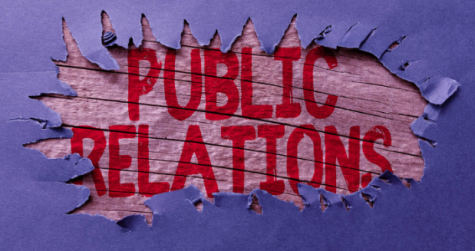Movie soundtracks stand the test of time
Whether it be the bombastic anthems of Edgar Wright’s “Baby Driver” or the muted ‘90s hits of Greta Gerwig’s “Lady Bird,” soundtracks are a key component of movie-making.
“If there’s music to begin with, it helps set the [tone of the] scene. If you’re watching an intense scene, you get that sense of intensity through the music. Music helps provide a context for that,” band director Jeff Reynolds said.
Oftentimes a director will choose songs that impact the viewing experience; a song is rarely chosen without a meaning. During the final moments of Martin Scorsese’s “The Irishman,” the Five Satins’ “In the Still of the Night” was used to showcase the loneliness of the characters.
“A fantastic soundtrack can elevate a movie and boost the [viewing] experience overall. It can also lift up a movie that is suffering from writing or visual issues. An average soundtrack might just not be worth paying attention to,” said junior Kenneth Pratt.
When crafting a film, moviemakers have many tools at their disposal: cinematography, the script, or the actors’ portrayals. Directors and writers are also tasked with creating a soundtrack that plays to the movie’s emotions or events, such as the use of “Being Alive” from the musical “Chorus Line” in Noah Baumbach’s “Marriage Story” after the protagonist’s divorce is finalized. The lyrics parallel the ex-husband’s feelings about his ex-wife, longing for “someone to care.”
“When songs are brought in to be in a film, [those songs] will always be associated with those scenes that they’re in,” Reynolds said.
Songs are often chosen to elicit an emotional response from the audience, typically most effective when diegetic (meaning the music is playing inside the story, rather than just for the viewer). By playing the same song for the viewer to which the characters are listening, the audience is placed in the character’s shoes.
“One of my favorite songs in a movie is the use of ‘Put on Your Sunday Clothes’ [by Barbra Streisand] at the beginning of ‘WALL-E.’ While it plays, you get a good sense of how lonely Earth is, putting the viewer in WALL-E’s world,” said sophomore Evan Kissel.
By choosing the right song for a scene, a director is able to seal a movie scene in iconicity, forever connected to its musical accompaniment. For instance, audiences will forever associate David Bowie’s “Heroes” with the triumphant night ride during the closing moments of “The Perks of Being a Wallflower,” following the protagonist’s first steps on his road to recovery after his fight with mental illness.
“Music stimulates our ears and makes us feel the energy in the scene. If sad music is played alongside a sad scene, it gains an emotional response from the viewer. Sometimes sounds and music connect with us even more than the visuals,” said Pratt.
A filmmaker’s main job is to tell a story, however difficult it may be. A movie-maker typically employs various tactics to tell a story the way he wants, utilizing techniques to prey on the audience’s empathy. Oftentimes movie-makers find it simplest to do this by bridging the gap between the viewer and the character through shared music.
“Song choice is a key contributor to how characters’ emotions are displayed; it makes the world more interesting by engaging you with the characters,” said Kissel.
Scenes featuring iconic songs like Ferris’s intense karaoke cover of “Twist & Shout” by the Beatles in the ‘80s classic “Ferris Bueller’s Day Off” or Patrick’s declaration of love set to “Can’t Take My Eyes Off of You” by Frankie Valli in the ‘90s flick “10 Things I Hate About You” remain etched in cinema history for many years to come.
“There’s movies that I watched when they came out that I was able to watch as a family and share with my son, who’s 19 now, and you don’t really realize that these certain pieces of music in these movies are important,” said Reynolds.

EDEN WALKER’s first love is writing. Having spent two years on staff already, they are excited to see what their third and final year writing for...





